In this article, I delve into the question: What if the Earth stopped spinning?
Most people don’t think about how important Earth’s rotation really is. However, it is vital for life in a variety of ways. So, naturally, I came up with this question.
It turns out that it would end in more than an infinitely long day. It would end in the destruction of almost all life on Earth except a few organisms (again, tardigrades) and the face of the Earth being liberated from all signs of humanity.
Earth’s rotation is a silent helper that controls everything from algae to weather patterns.
In this article, I delve into the question: What if the Earth stopped spinning?
Most people don’t think about how important Earth’s rotation really is. However, it is vital for life in a variety of ways. So, naturally, I came up with this question.
It turns out that it would end in more than an infinitely long day. It would end in the destruction of almost all life on Earth except a few organisms (again, tardigrades) and the face of the Earth being liberated from all signs of humanity.
Earth’s rotation is a silent helper that controls everything from algae to weather patterns.
Inertia: The Greatest Problem of Them All
Inertia: The Greatest Problem of Them All
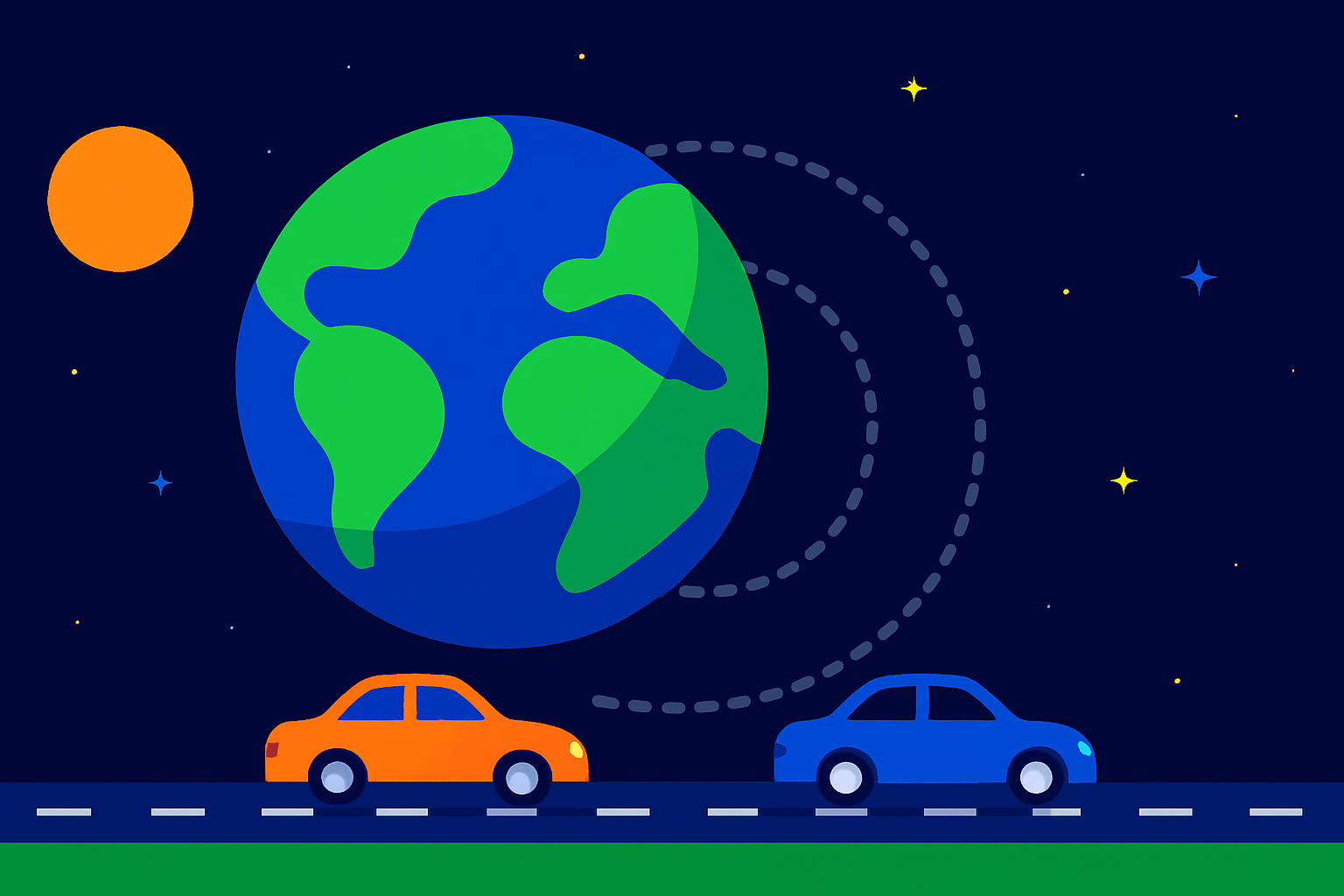
This life-giving rotation, however crucial, is not felt by us. After all, for thousands of years, humans thought everything moved around the Earth! The reason for this is that we are not only moving at a constant speed, but everything is moving at the same speed. This case is similar to when someone is driving on a highway at a constant speed parallel to someone driving the same speed.
This life-giving rotation, however crucial, is not felt by us. After all, for thousands of years, humans thought everything moved around the Earth! The reason for this is that we are not only moving at a constant speed, but everything is moving at the same speed. This case is similar to when someone is driving on a highway at a constant speed parallel to someone driving the same speed.
Winds of Destruction
Winds of Destruction
Firstly, the moment the Earth stopped, that change would soon become apparent. The air would continue going at 1674 Kph (the equatorial rotational velocity of the Earth) which would wreak all sorts of havoc. To get an idea of how fast this is, the fastest wind ever to be recorded was 512 KpH in a tornado in Oklahoma. It caused houses to collapse and cattle to be lifted into the sky. The fastest non tornadic wind was only a 408 KpH wind that only lasted a few seconds over the Barrow Islands of Australia.
1674 kph winds would be around 1.35 times as fast as the speed of sound. These velocities would mean anything that would pose the slightest resistance would be launched at extreme velocities into the air.
If you knew these winds were coming, where would you try to hide—and do you think anything could survive outside?
What About the Oceans?
What About the Oceans?
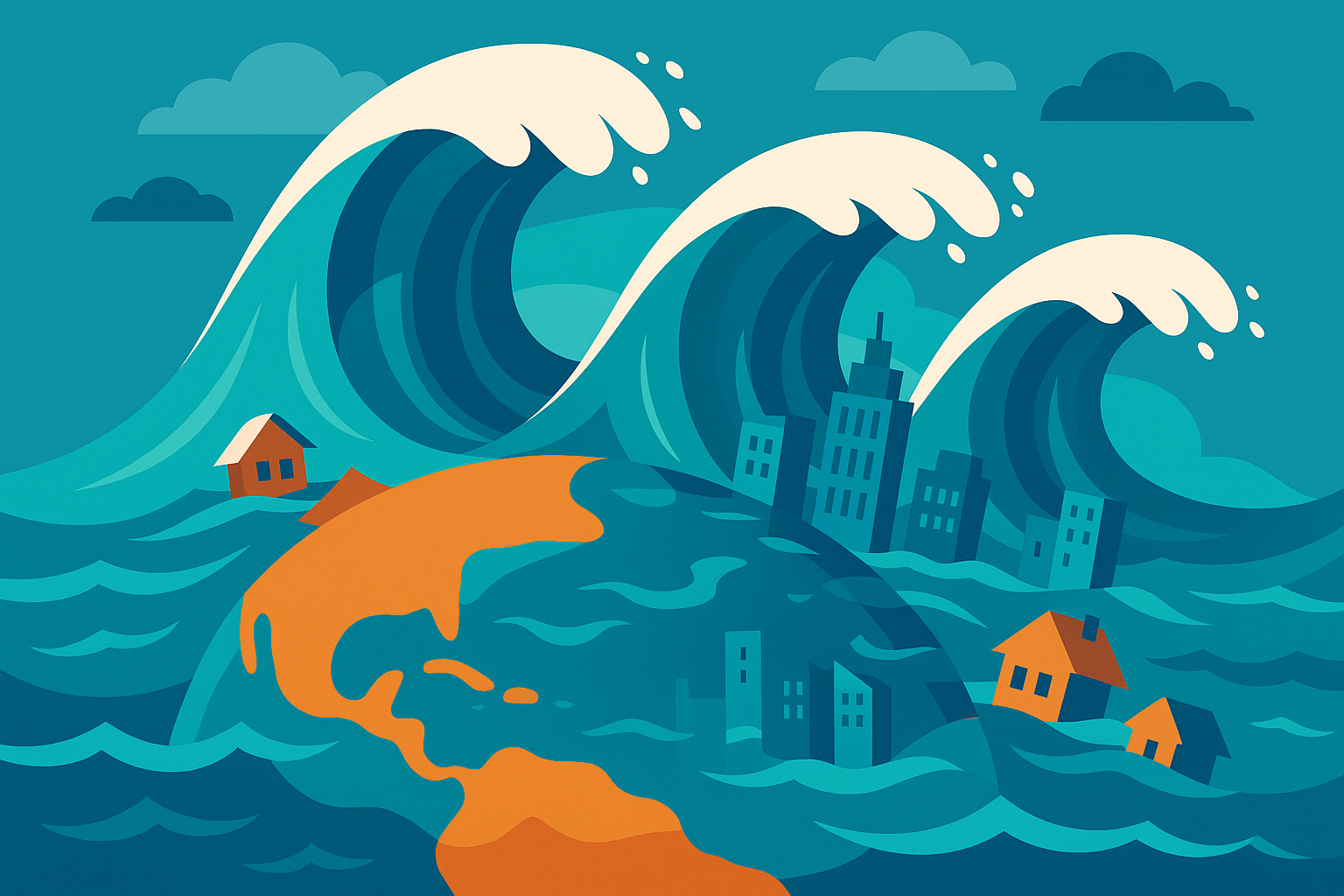
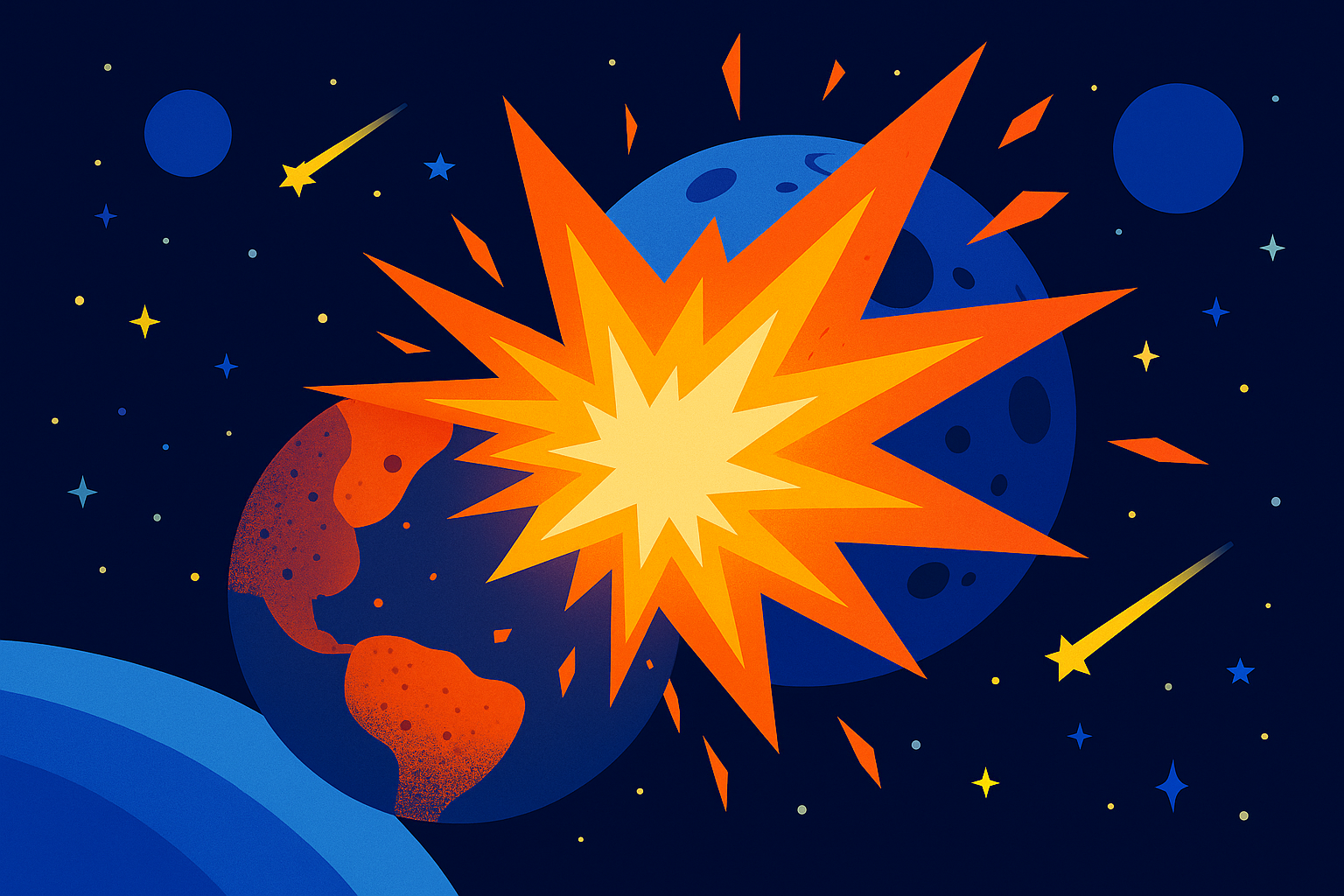
Even more devastating than the winds, the oceans would unleash their own fury. The oceans would also have the same velocity as the rotation, but being much heavier and having more kinetic energy would not just cause floods, but would create waves kilometers high, reducing not just shores but inland cities to ruins. This would create new islands and inland seas with problems of their own.
Tectonic Problems
Tectonic Problems
Out of all the risks, the worst problem would also be caused by inertia: tectonic plates. They would slam into each other due to friction with the now stationary mantle and core, creating devastating shockwaves and would obliterate anything nearby. The sheer force of 20 to 60 trillion tons of Earth and rock smashing together would at least create what I call a ‘magnitude 15 earthquake’ —a number beyond our current scientific scale, but meant to show just how unimaginably powerful this would be. Stronger than the pull of the Earth, This would create a mass crustal fracture, when huge chunks of magma and debris would fly out in random directions, sending millions of cubic kilometers of lava into the atmosphere.
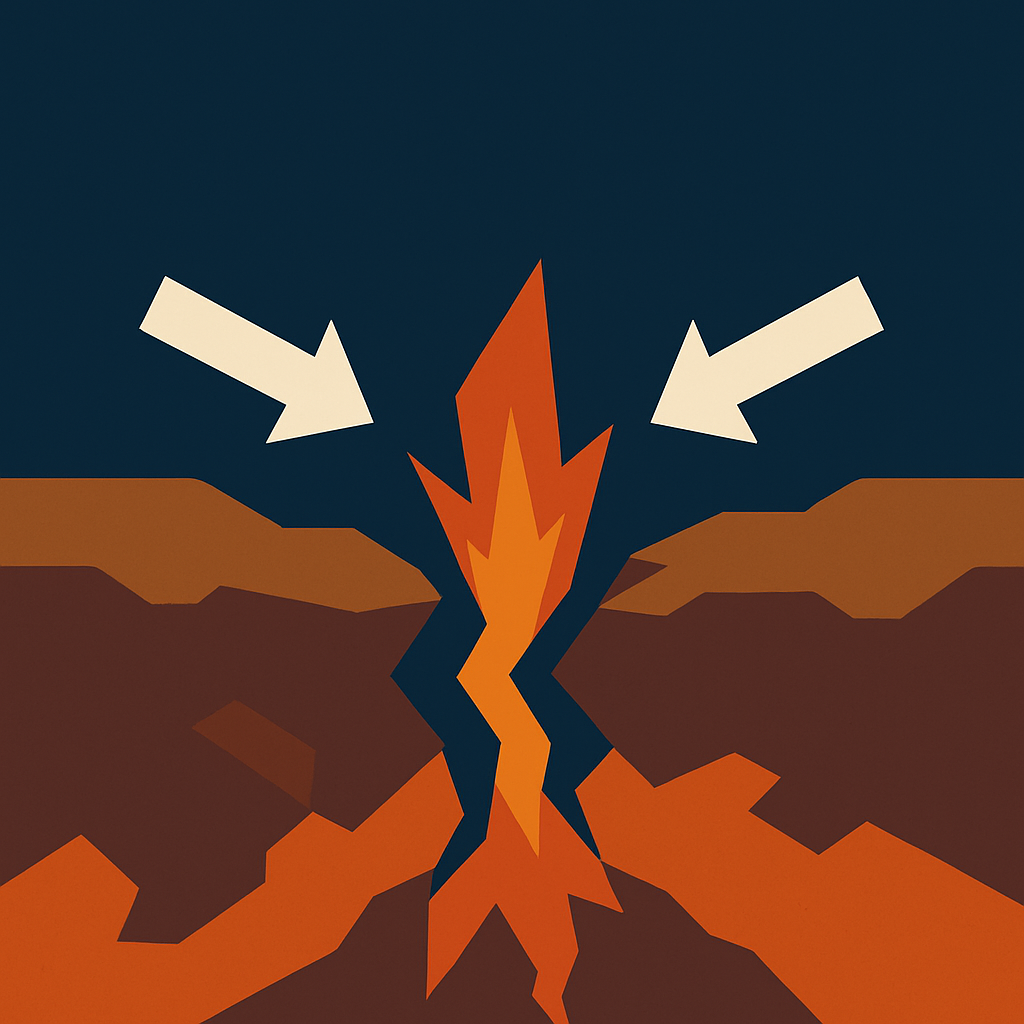
Oxygen, Plankton, and the Coriolis Effect
Oxygen, Plankton, and the Coriolis Effect
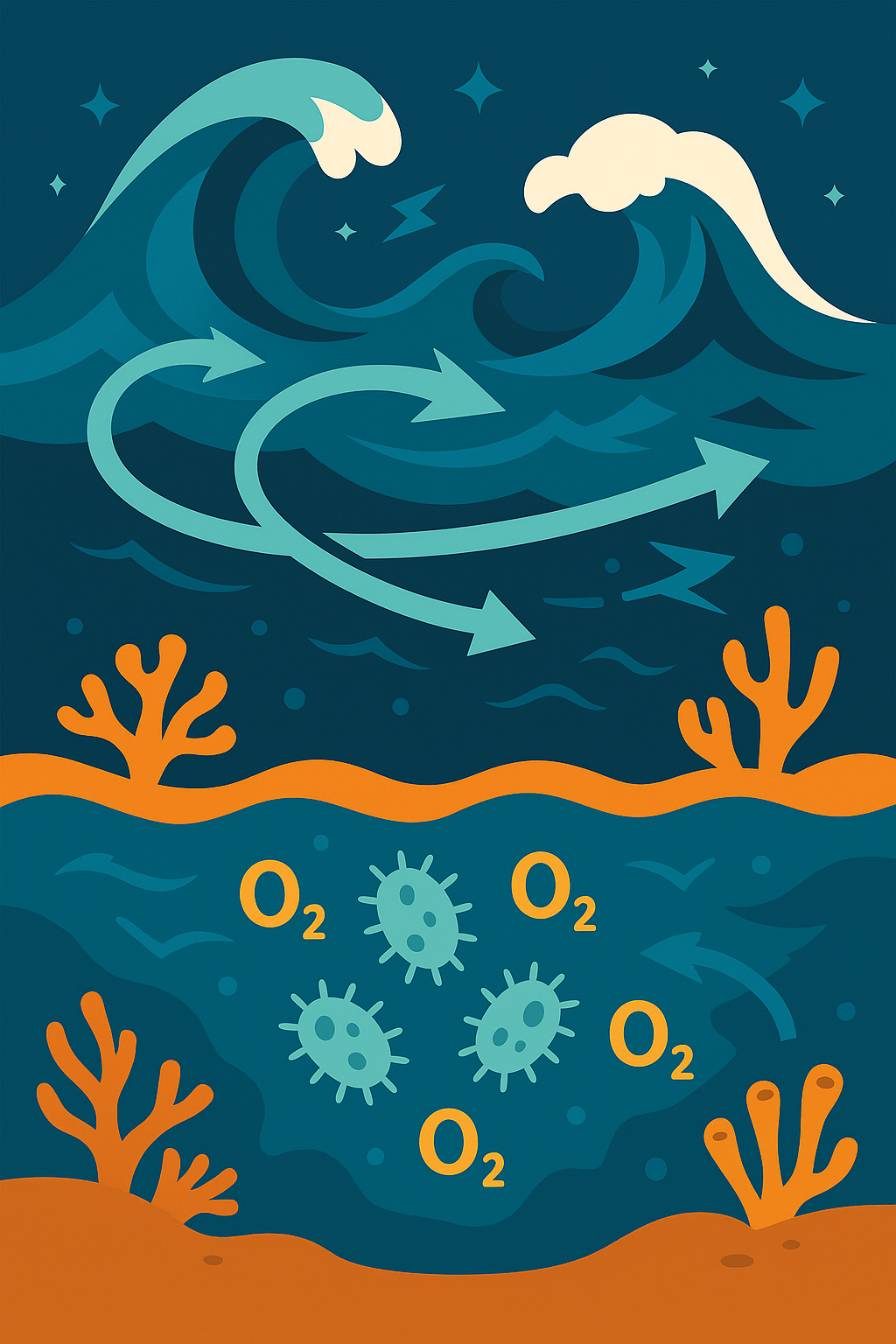
Even if humans somehow survived massive tsunamis, supersonic winds and mass crustal fractures, we would have to look forward to life in bunkers, as these dangers would not die down until at least a few centuries.
Scientists predict that this would also disrupt the coriolis effect, and cause the delicate ocean currents to be disrupted, which would end the life-giving flow of nutrients to the phytoplankton.
The loss of tiny plankton may not seem like a big problem, but these tiny organisms deliver over half of the oxygen we breathe.
The Moon, our faithful companion
The Moon, our faithful companion
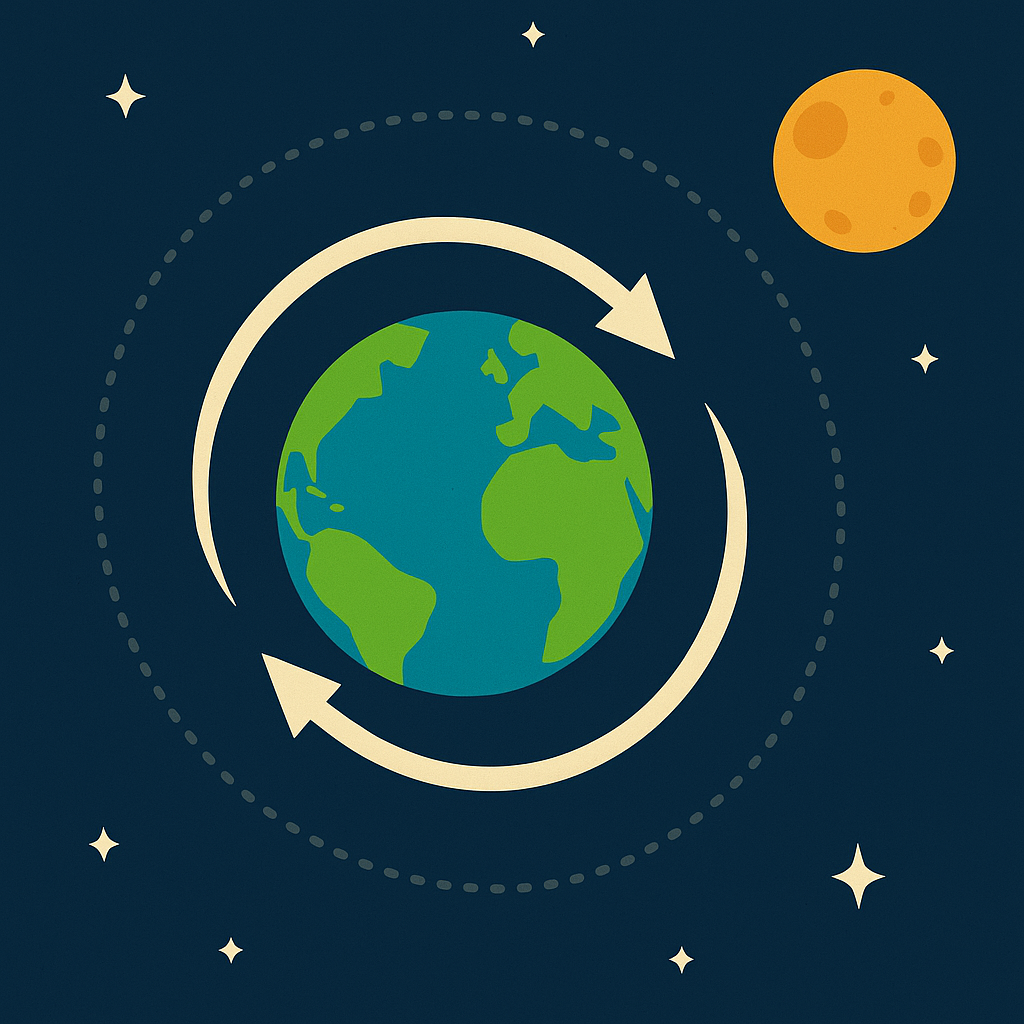
Not all hope would be lost, as over many a million years, the moon would slowly pull the Earth back to rotation, due to an effect called Lunar Tidal Drag.
It uses the same force that causes tides, to slow down the Earth’s rotation by an immeasurable amount per year.
Together, Earth’s speed has decreased by about 0.34 KpH in hundreds of millions of years due to this, so scientists predict that the moon would cause the Earth to respin – but in the opposite direction!
Flight, fire or freeze- Could we survive?
Flight, fire or freeze- Could we survive?
Tidal locking (Tidal locking happens when one side of a celestial body (like the Moon) always faces the object it orbits.) would result in both sides being uninhabitable due to extreme temperatures. Clearly, this isn’t an option to stay here, so humanity would have to migrate and colonise planets like Mars to be able to survive.
For more information on how to do this, see my article ‘Tardigrades Antifreeze and MOXIE: Could Living Organisms Survive On Mars’
Hypothetically, the algae (and other living creatures) would also be in danger from extreme temperatures as one side of the Earth would face the sun and the other would be in eternal darkness, creating thermal inequalities that would only add to the ferocious winds and tornadoes created.
This would also completely disrupt the ecosystem, destroying almost all flora and fauna, depriving us of any food.
The sunny hemisphere of the Earth would practically be incinerated, evaporating all signs of water and adding to the greenhouse effect, and the dark side of the Earth would reach extreme negative temperatures.
Which side of the Earth would you choose—the scorching day side, or the freezing night side—and why?
Could we build massive underground cities?
Could we build massive underground cities?
Since the surface of the Earth would be uninhabitable, one of our options would be to go down. Massive, self-sufficient cities could be constructed underground, and could be connected by hyperloops which trains that work in sealed tunnels and are propelled by high pressure air behind them, pushing them forward like a plunger in a pipe. The sunny side could be plated with solar panels which would harness the power of the sun and be diverted towards all the subterranean cities. Underground crops could be ground in huge vertical farms, where plants would be stacked up on top of each other which would be much more space-efficient than lateral farming.
Animals could be reared Noah’s Ark style where a few survivors would be used to rekindle the animal kingdom, but lab grown protein is a much safer bet. Also, (get ready to be disgusted) mealworms, locusts and crickets are all edible when fried, and are extremely rich in protein and iron. In some countries, it is legal to mix ground mealworms into flour to dilute it for a cheaper option, and nobody has ever died from eating a fried locust (aside from choking, pesticide contamination and allergies), so insect farming would be a nutritious if somewhat disgusting option.
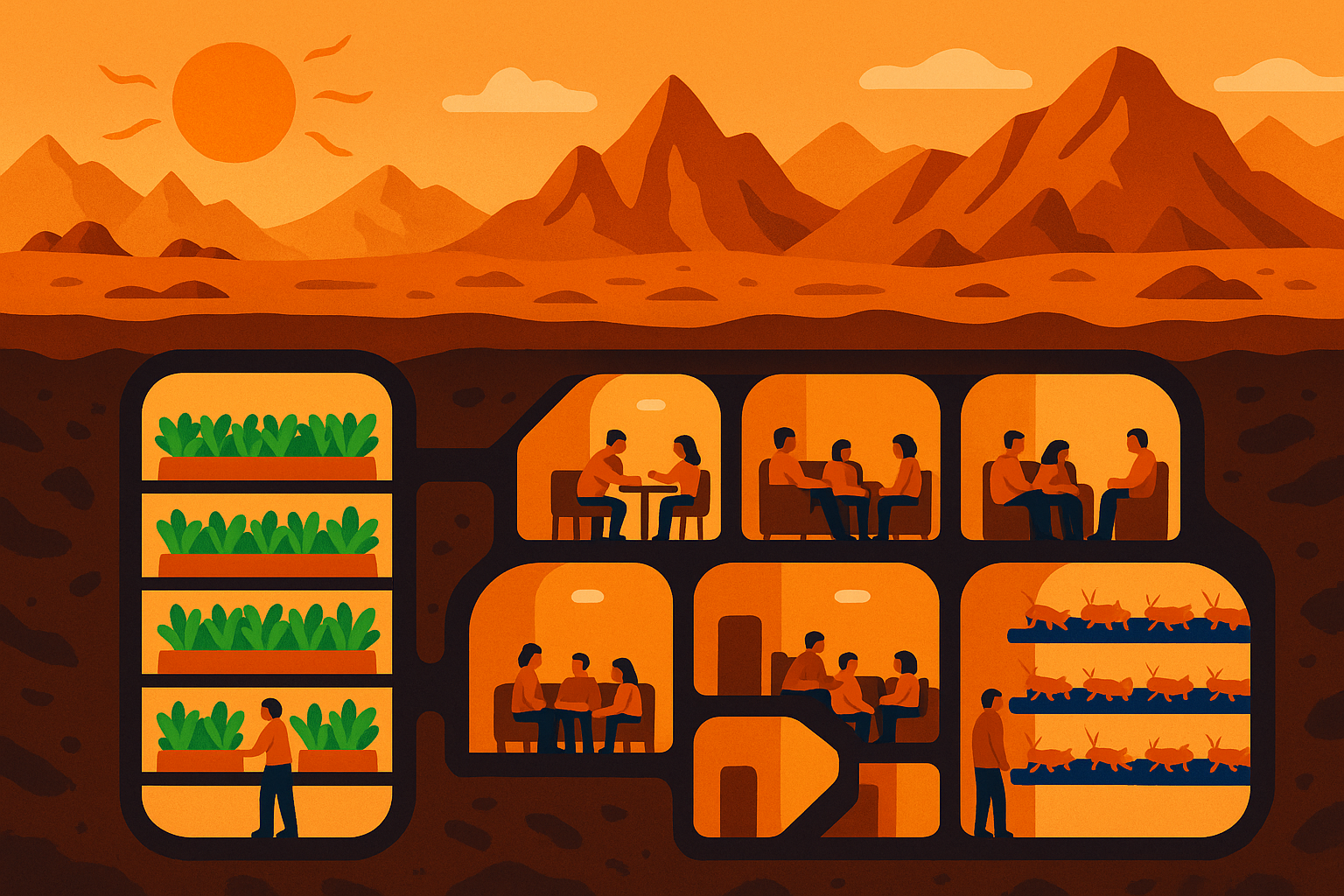
Could Humanity Ever Restart Earth’s Spin?
Could Humanity Ever Restart Earth’s Spin?
This scenario would be so catastrophic, that there would be practically nothing that we could do to accelerate it back. We could try massive solar powered ion thrusters, or other technology, but building this in the supersonic winds would be nothing short of impossible.
If the winds receded, we could try to build a massive propulsion unit that could utilize fusion propulsion or even a solar sail made out of a metamaterial that would turn non reflective, when needed, as it would have to be pulsed in order to spin the Earth in the right direction. Even getting off the surface of the planet safely would be a challenge, as currently, most rockets can only fly in strict weather conditions, and definitely not supersonic winds.
The Orbital Centrifuge
The Orbital Centrifuge
Waiting could be an option, until the winds settled down, but this could take years. A possible option would be a spin launcher, which is a huge device that utilises a spinning arm to propel a projectile at mach 6 into orbit.
This machine uses a ballistically optimised projectile that can slice through the air with maximum efficiency.
The arm spins at a blistering 8100 kph tip speed to propel projectiles into orbit without combustion-based thrusters. The whole arm is housed in a concrete box and accelerated using a massive electric motor.
However, the centrifugal forces created by this would likely annihilate any human beings inside this thing.
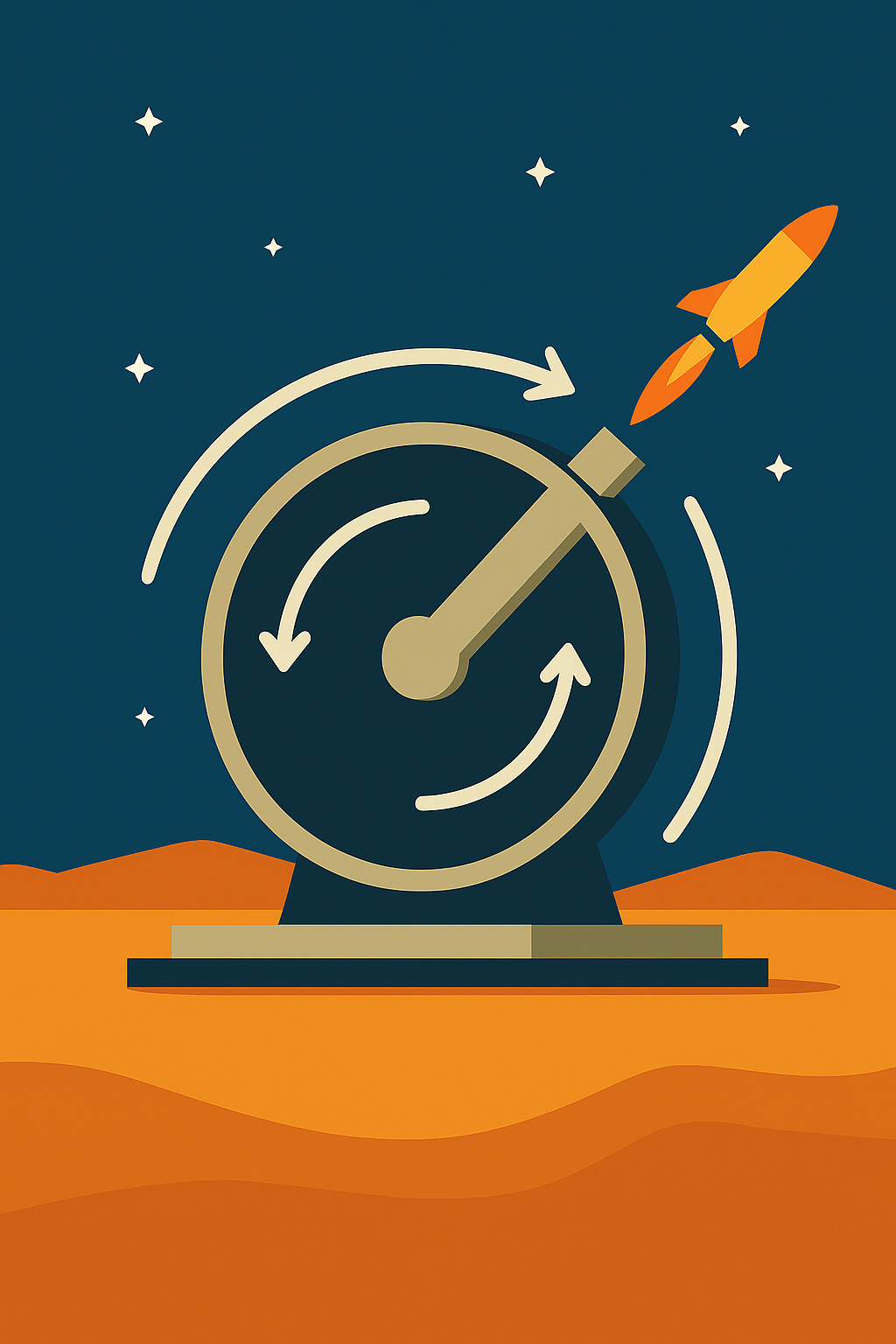
Earth’s Spin: The Unsung Superpower
Earth’s Spin: The Unsung Superpower
Although the Earth will (probably) not stop spinning for quite a few billion years, thinking about this scenario can give various insights on how our planet works. Our current technology limits our survival and our imagination (and the laws of physics) limits our technology.
In the end, if humanity ever faced this nightmare scenario, we would have to dream bigger than ever before just to survive. Earth’s silent spin may seem ordinary, but it secretly powers so many of the forces that make life possible.
So what about you? If the Earth suddenly stopped spinning, how would ‘you’ try to survive? Would you go underground, take to the stars, or come up with something completely different? Share your wildest survival ideas in the comments—I’d love to hear them!

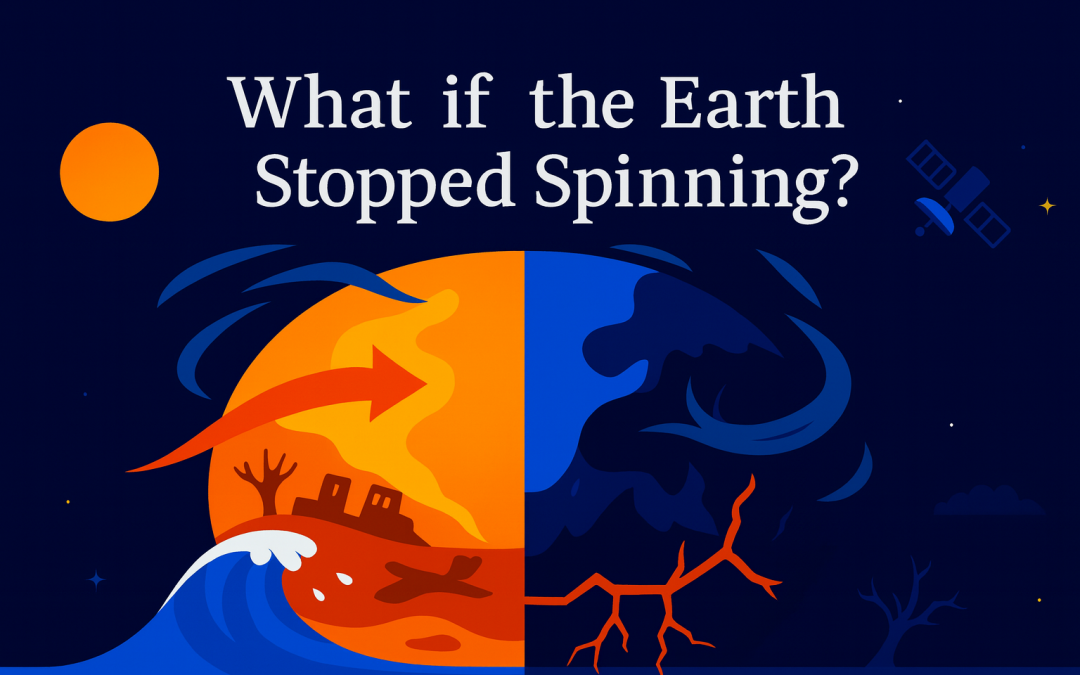
Another exciting question, what if….. What if the Earth stopped rotating. This question does not arise in many people’s minds, we do not even think about it, because in fact it does not even occur to us in everyday life that the Earth rotates.
It does its thing beautifully, leisurely, we do not even pay attention to it, although we secretly know about it, the changes of the seasons, or day and night, it is all related to the rotation of the Earth.
With this question we have to think about what a perfect creation the universe is. Everything is in place, everything is in tune with everything. There is nowhere that something like a tailor cuts a dress a little too narrow, which then becomes unwearable, or we design a house that cannot be built into the windows, because, for example, they failed to make the parallel anywhere.
In the case of the Earth, everything is well-designed and well-timed. So that even in extreme cases, such as earthquakes, typhoons, huge floods, and even if major natural disasters occur, the Earth can handle it and adjust itself, and the extremely strong wind you mention
cannot destroy the Earth.
The Earth is supposedly not designed for a rotation stop, and the collision and collision of tectonic plates would cause such forces that would probably destroy it. If we consider that this event would occur with such force as if it were a magnitude 15 earthquake. With such a strong earthquake, it would probably not stay on the ground.
Once in the Italian Alps at an altitude of 2000 m, I experienced a magnitude 6.5 earthquake, a huge rock fell from one of the peaks, it was shocking. We can’t even imagine what a ten-magnitude earthquake would cause.
A lot of irreversible things would happen and I think the Moon would try in vain to calm the seas, which would cause the winds to calm down, by which time the creatures would be extinct. So the only hope would be that maybe the Earth could survive, but in the event of a catastrophe with such serious consequences, I don’t think there would be any creatures left who could try to restore the arms.
I’m sure that such a terrible thing won’t threaten the Earth and the creatures for a very long time.
In any case, you raised a very interesting topic, because anything can happen, so this could happen.